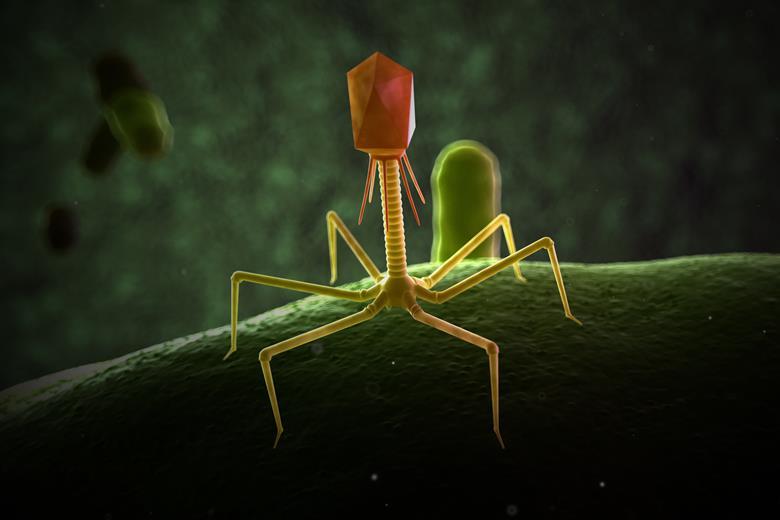A fresh perspective on phages - AMI intern Helen Kinchin opens up on her new PhD topic

What’s it like at the start of a career working with bacteriophages? Applied Microbiology International intern Helen Kinchin, who recently began a PhD at the University of Warwick, reveals her experiences.
AMR and the threats that come with it have always been of interest and concern to me. The stat that by 2050 AMR could cause over 10 million deaths worldwide is frightening, so new methods to tackle AMR are really important.
When searching for a PhD I was interested in anything microbiology or AMR related. When I spotted this one, working with phage, it intrigued me and piqued my interest. A relatively small but re-emerging field tackling AMR from a different angle involving viruses and microbes - what’s not to like? It seemed a perfect fit for me, so here I am.
READ MORE: A day in the life of a phage expert
As I was unfamiliar with phage, I set out to find out what I could before I started working with them.
Phage are everywhere
What fascinates me about them is their abundance. We are surrounded by them, from our own gut microbiome and skin, to kitchen surfaces, food and water. They’re on our pets and even in the air.
It’s estimated that there are over 10^31 phage worldwide, which is more than any other organism, including bacteria. Couple that with the fact that they are highly specific to their bacterial hosts, and it means their applications and potential to combat AMR are huge.
Their use as a therapy targeting a pathogenic infection whilst not harming good bacteria makes them even more special. Plus, they look so cool, like little biological robots!
Fascinating to see
With my short experience in the field and lots of conversations with my lab group, I have come to find, as with anything, there are ups and downs. You can get some great looking results in vitro, lawns of bacteria speckled with phage-induced plaques - amazing to see! But how does that research translate into clinical use and tackling AMR?
A common place where researchers search for phage is water treatment works. And yes, this does mean scooping up slurry samples to take back to the lab. If you are lucky, someone will do this for you, if not… have fun scooping!
Once a phage has been isolated from the sample and initially characterised, we need to know if it is novel. This requires lots of further research, from microscopy, DNA sequencing and phylogenetics, to bioinformatic comparisons and literature reviews which can be a lengthy process.
Novel phages - and the next steps
So, you’ve got a novel phage - amazing! But what next? Your phage needs scaling and stocks need to be created for future experiments, which also need to be planned.
So, as you can see, there is lots to think about when discovering some of the 10^31 phage out there. There are many other questions that can be asked about phage research and phage therapy. A few that come to mind are:
-
Phage themselves are viruses so will inevitably be targeted by our immune system, how can we get them to the target infection intact?
-
What if a previously phage-treated infection reoccurs? Will our own antibodies destroy the phage before reaching their target site the second time around?
-
Can we give them a helping hand to improve their efficacy, and how do we do that?
Wider mysteries
These are some of the questions I will be exploring over the next few years. Outside of these questions, there are of course the wider mysteries of:
-
What about resistance, will this develop the same way AMR has done? How can we ensure this is limited?
-
How do we get them into hospitals for patient use?
These are other massively important areas other researchers in the field are currently exploring. Researchers may also want to get involved in manufacture, regulation, funding and public messaging surrounding phage, so there is a huge array of possibilities in this emerging field.
In summary, my experience so far has been hugely interesting, and has shown me that the possibilities in this emerging field are endless. I for one am excited to be able to contribute. Who knows how far this could take us in our fight against AMR and beyond?
Helen is studying phage for her PhD at the University of Warwick. Her supervisor is Antonia Sagona at the University of Warwick and her co-supervisor is Martha Clokie from the University of Leicester.
